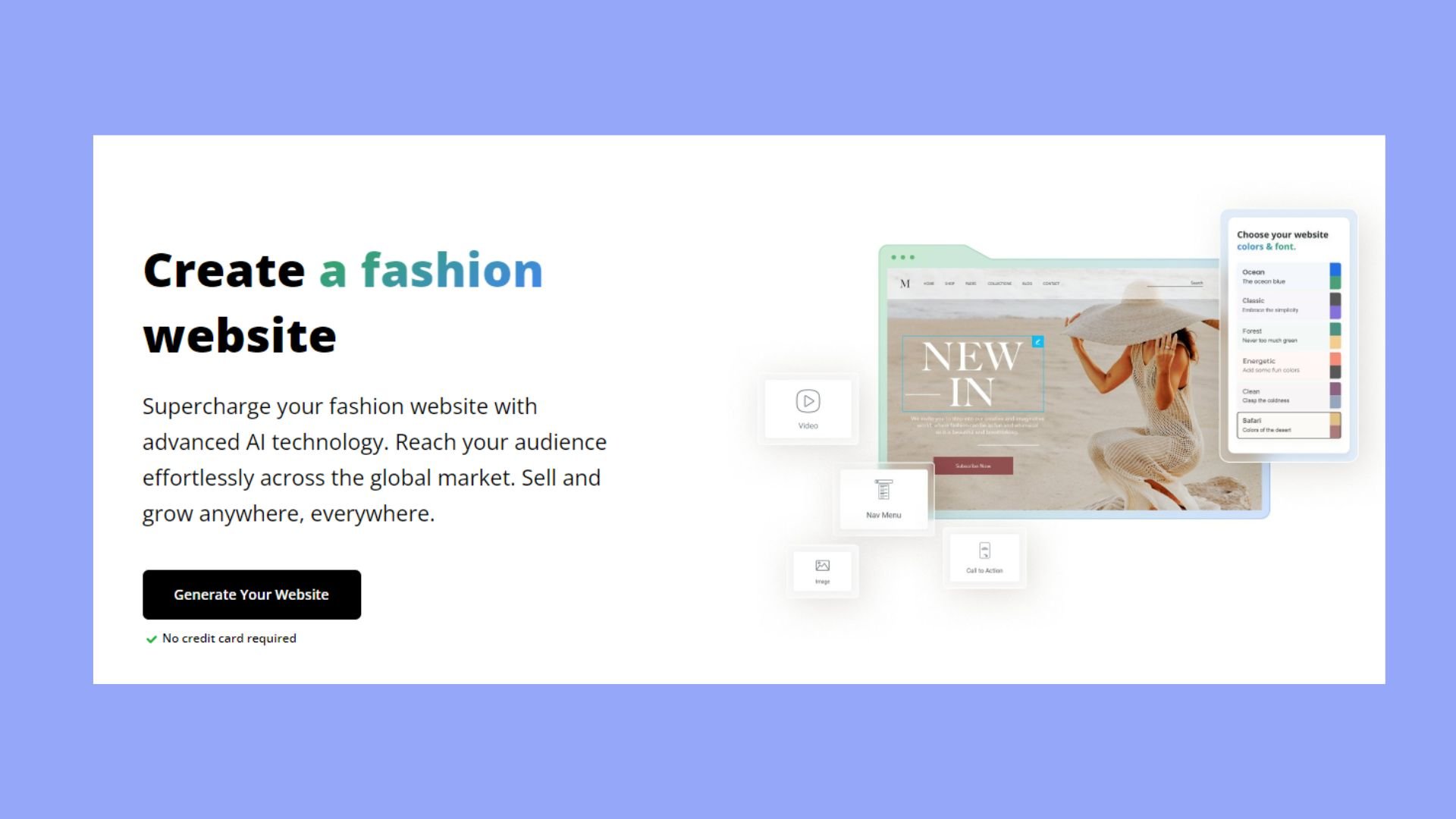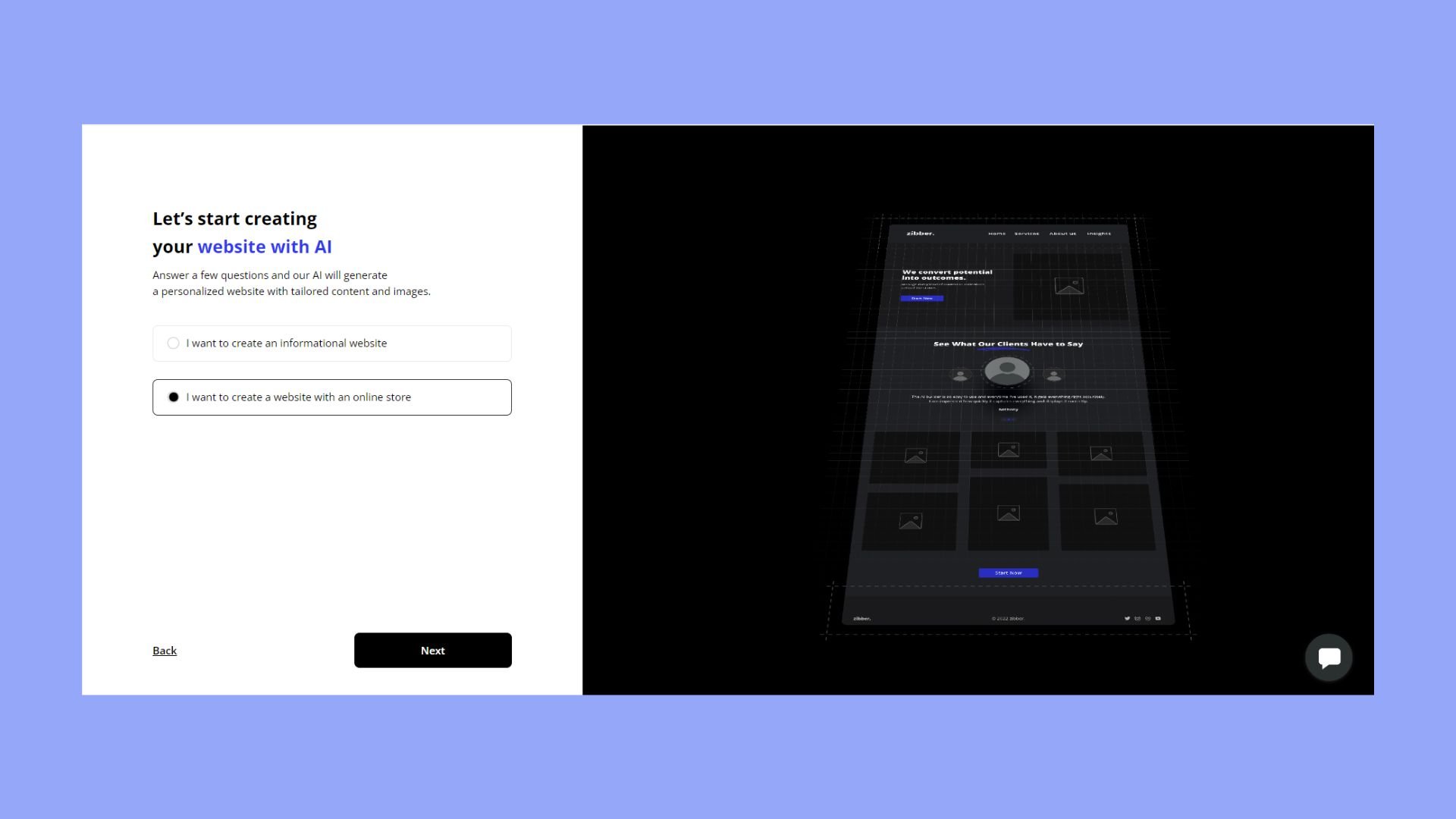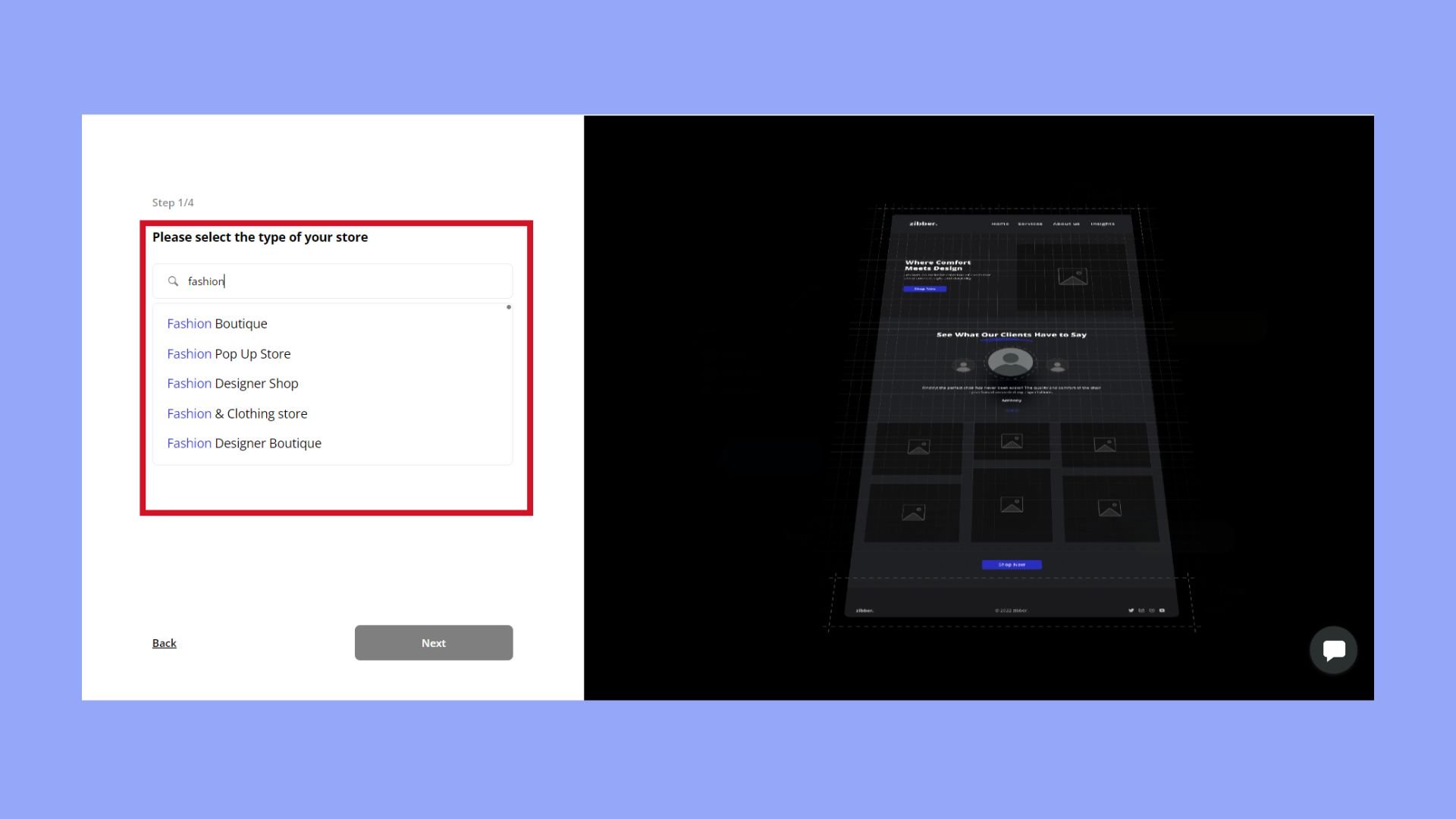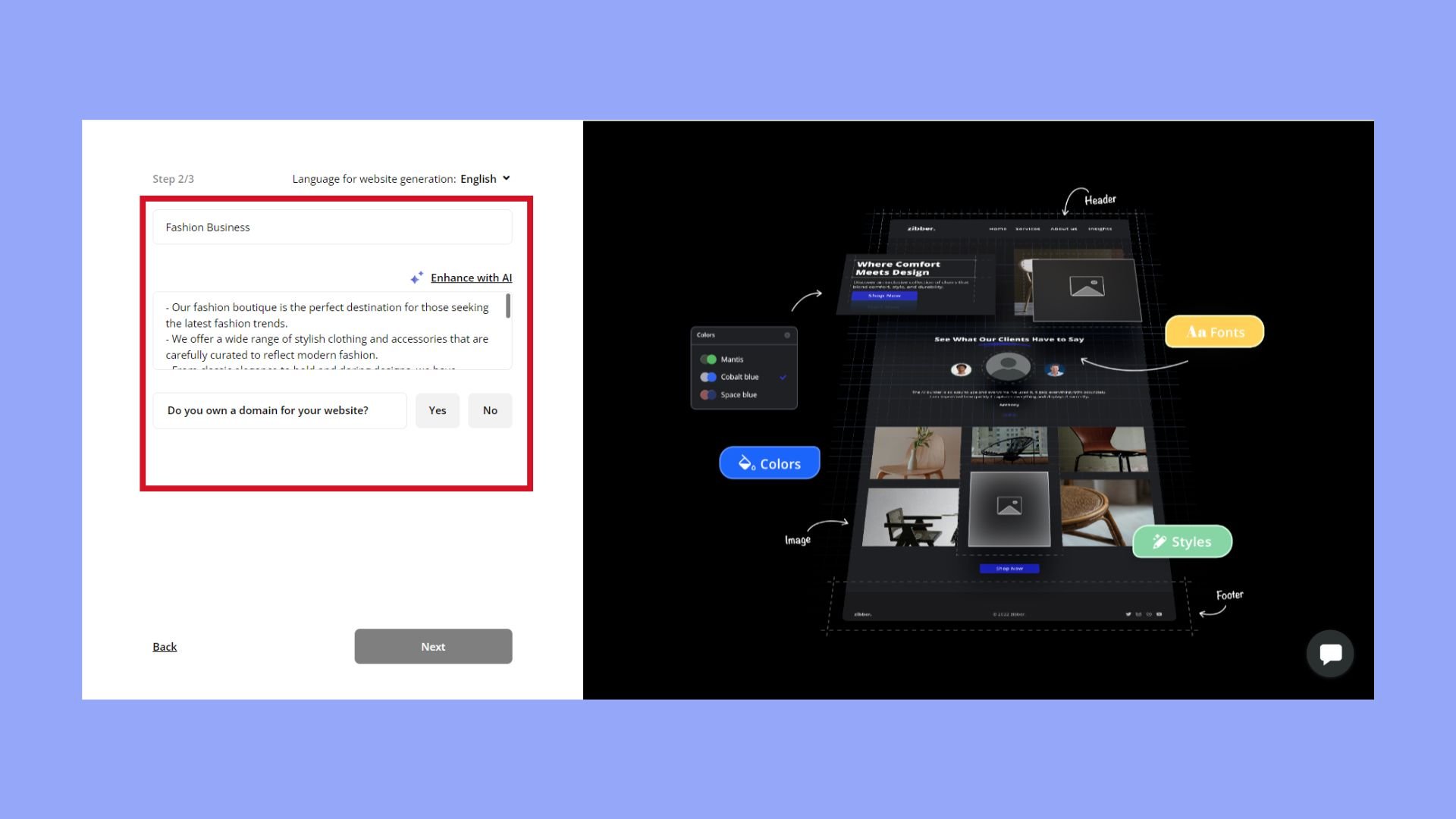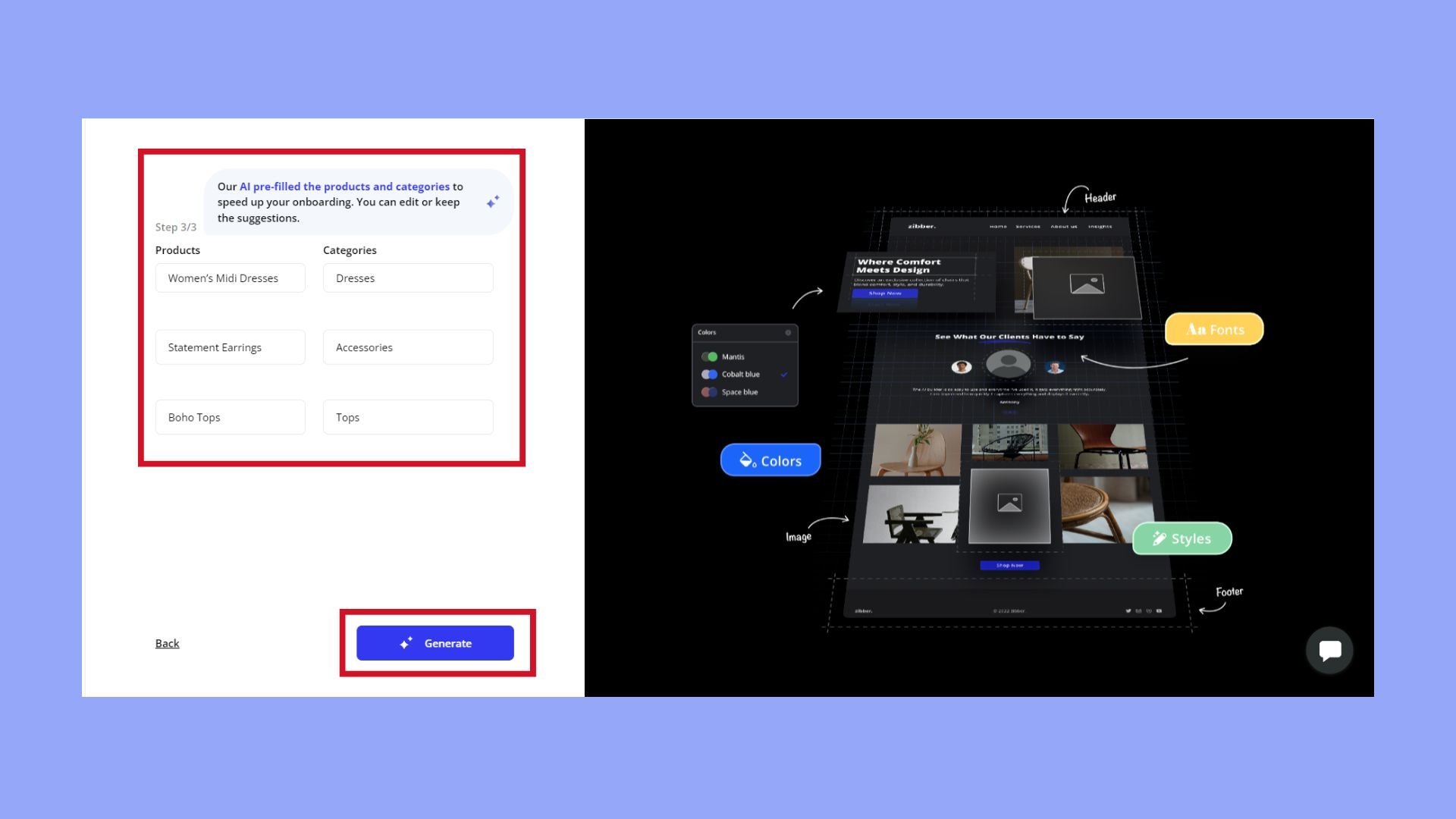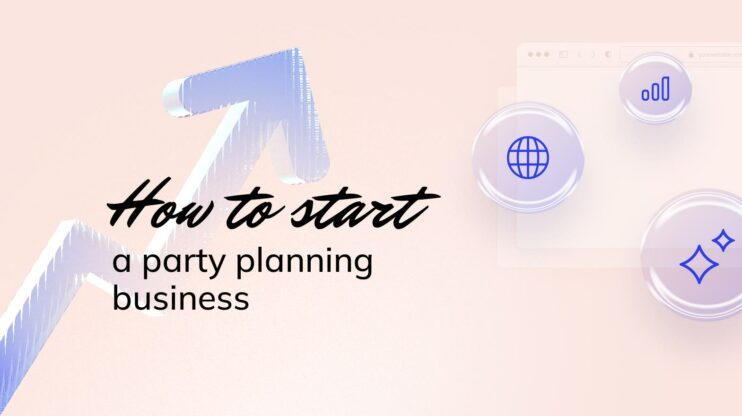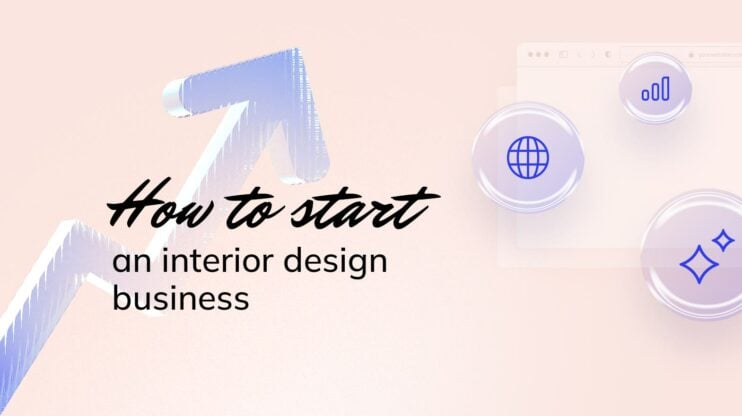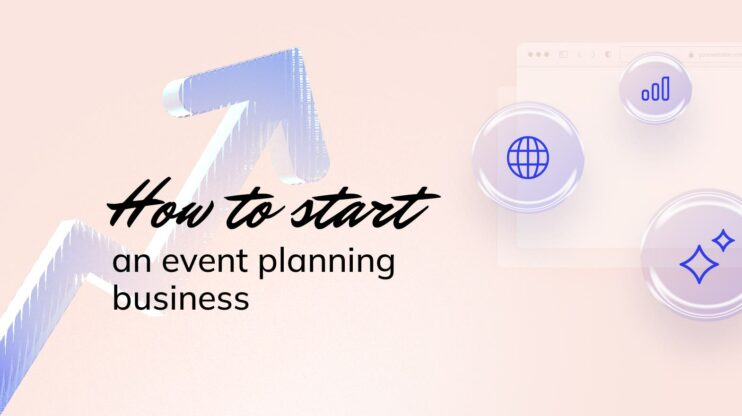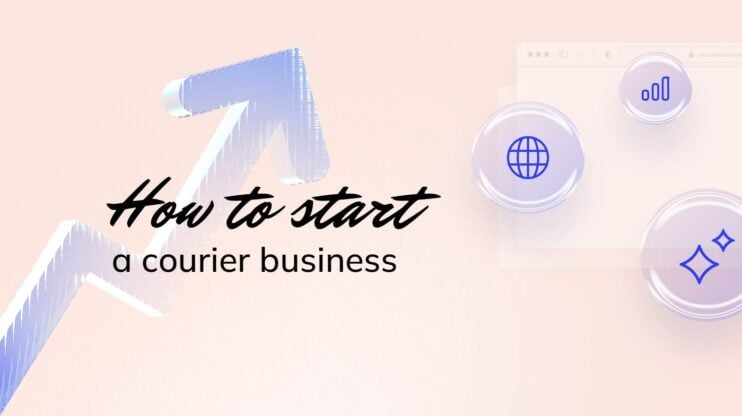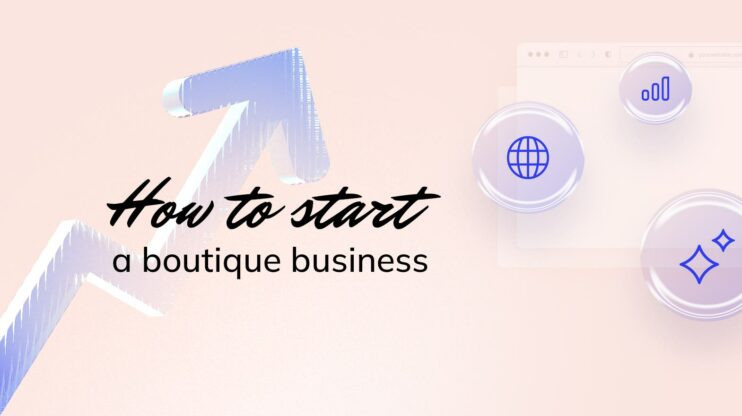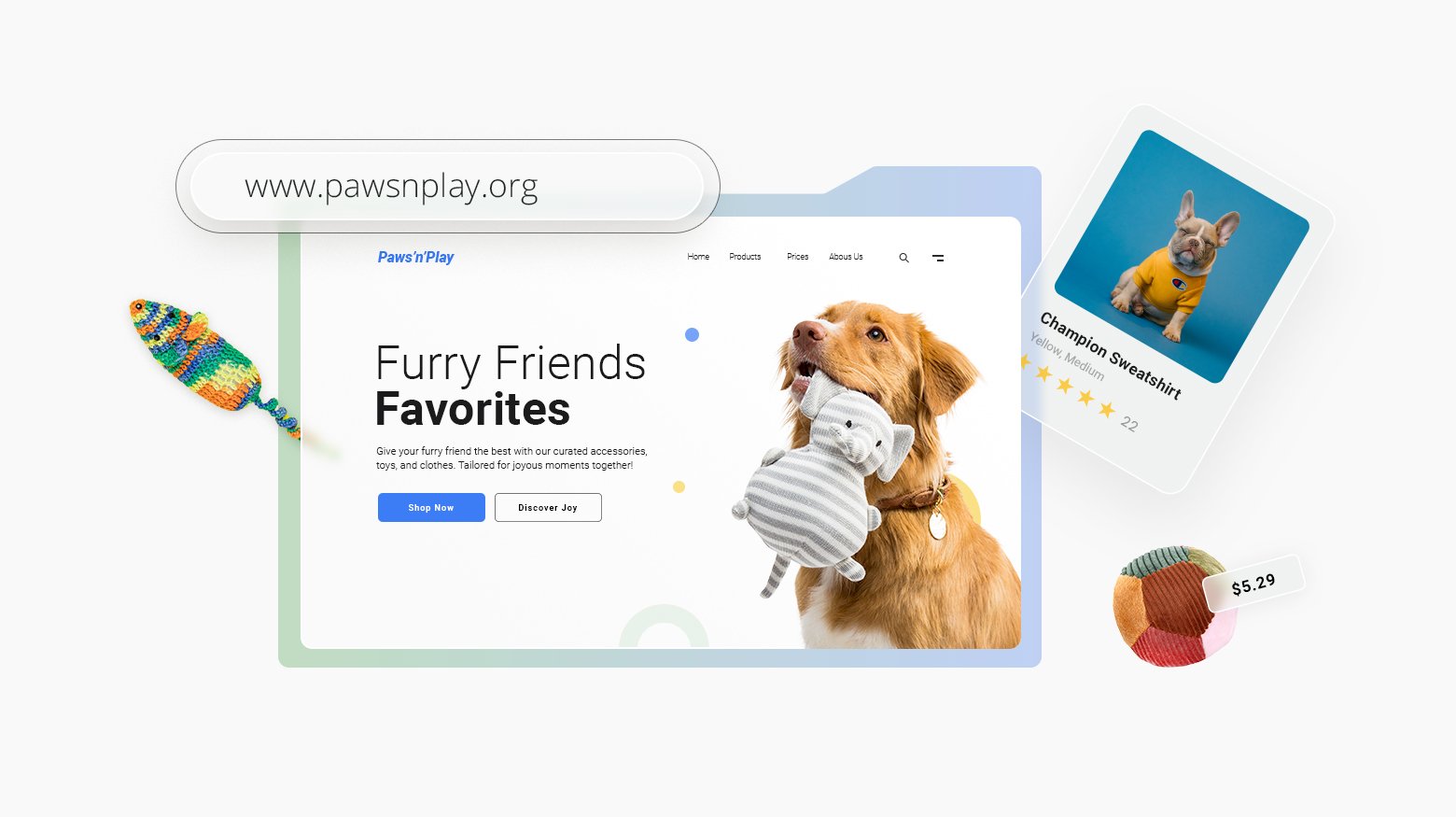Starting a fashion business offers exciting opportunities and rewards. This guide provides essential tips for building a successful venture, from brand creation to production and marketing. With a growing global market, there’s immense potential for new businesses. Let’s learn how to leverage these opportunities and turn your fashion dreams into a thriving business.
FAQ
Can you start a fashion business?
What is the best fashion business to start?
How do I start making fashion?
How profitable is fashion?
Is fashion a good industry?

Looking to sell online?
Create your custom online store in minutes with 10Web AI Ecommerce Website Builder and take your business online.
Stage 1: Starting a fashion business
Starting a fashion business requires a clear mission, a strong brand, and a well-crafted business plan. These elements form the backbone of a successful enterprise, guiding every decision and strategy.
Step 1: Setting your business fundamentals
Your mission is the foundation of your business. It defines your purpose and what you aim to achieve. Start by asking yourself key questions: What is the core value your fashion business will offer? Who is your target market? Answers to these questions will help shape your unique brand identity.
Creating a memorable brand means consistent messaging and visual style. Decide on your logo, color scheme, and tagline. Ensure your brand voice aligns with your mission. For instance, if your mission focuses on sustainability, use eco-friendly materials and market this point to attract like-minded customers.
Creating a strong business plan
A robust business plan is crucial for navigating the complexities of the fashion industry. This plan outlines your business model, target market, financial projections, and marketing strategy. It’s essential when seeking investors or loans, as it demonstrates your business viability.
Include details such as whether you’ll register as a sole proprietorship, LLC, or another business structure. Describe your products in detail and how they’ll meet market needs. Outline your sales strategy, mentioning both online and physical stores. Break down your budget, including costs for production, marketing, and other expenses. A clear, detailed business plan acts as a roadmap, helping guide your decisions and growth.
Starting a fashion business can be exciting and rewarding, provided you lay a solid foundation with these essential business fundamentals.
Step 2: Understanding the market
To successfully start a fashion business, it’s crucial to understand the market. This involves conducting market research, identifying your target audience, and analyzing the competition.
Conducting market research
When starting out, market research is essential. Begin by analyzing industry reports to grasp current fashion trends. Look at consumer preferences and spending habits. Use surveys or interviews to gather direct feedback. This data helps in understanding demand and potential sales.
Next, consider demographic information. Learn about the age, gender, and location of your potential customers. This information can guide your design and marketing strategies.
Lastly, don’t overlook online sources. Social media, fashion blogs, and forums are valuable for insights. They can reveal what people like, dislike, and want more of in their clothing.
Identifying your target audience
Identifying your target audience means knowing who will buy your products. Think about age, gender, lifestyle, and income level. Are you designing for teenagers, young professionals, or perhaps parents?
Understanding your audience helps in tailoring your designs. For example, casual wear for teens will differ from business attire for professionals.
Use customer personas to represent different segments of your audience. These personas can help you focus marketing efforts and product development. Make sure to stay updated with changing trends and preferences within your target group.
Analyzing the competition
Knowing your competitors is just as important. Identify key players in your niche and study their strengths and weaknesses. Look at their product lines, pricing strategies, and marketing methods.
Visit their websites and social media pages to understand their brand identity. Notice what works for them and how they engage with their customers. This can offer valuable lessons for your own strategy.
Create a competitive analysis table. List down competitors and compare them on various parameters like price, style, quality, and customer service. This will help you find gaps in the market where your brand can stand out.
Step 3: Establishing the brand image
Building a strong brand identity is crucial when starting a fashion business. This involves creating a memorable brand name, a unique logo, and a signature style that will set your fashion line apart from others.
Your brand name should be memorable and reflect the essence of your fashion line. Here are the steps to develop a compelling brand name:
- Brainstorm ideas: List words that represent your business values and target audience.
- Check availability: Ensure the name isn’t already in use by searching online and checking social media.
- Get feedback: Ask friends, family, or potential customers for their thoughts on your shortlist.
Once you have a brand name, designing a logo comes next. A good logo is simple, recognizable, and scalable for different uses.
Steps to create a logo:
- Sketch ideas: Put your thoughts on paper or use a digital design tool.
- Choose colors and fonts: Pick those that mirror your brand’s personality.
- Hire a designer (if needed): Professional help can ensure your logo stands out.
Creating a signature style and packaging
Establishing a signature style is about creating a consistent look that makes your brand recognizable. Start by identifying your unique selling points, like innovative design or sustainable materials.
Keep these steps in mind:
- Define your aesthetic: Decide on the visual elements that represent your brand, such as colors, patterns, and design motifs.
- Maintain consistency: Use these elements across all products and marketing materials.
Packaging plays a significant role in brand identity, too. It’s not just about protection but also about making a strong first impression.
Steps for effective packaging:
- Design for your audience: Think about what would appeal to your target customers.
- Highlight your brand: Include your logo and brand colors on all packaging.
- Consider sustainability: Eco-friendly packaging can attract environmentally conscious customers.
By focusing on these aspects, you’ll help your fashion business stand out in a crowded market.
Step 4: Developing design and product
Design and product development is crucial when figuring out how to start a fashion business. You need to create unique designs and develop a marketable collection that stands out and appeals to your target market.
As a fashion designer, your journey begins with creating designs that reflect your personal style and vision. Research current fashion trends and gather inspiration from various sources. Sketch your ideas and refine them until you have a clear concept.
Steps to craft unique designs:
- Research: Look at the latest trends, street styles, and popular collections.
- Inspiration: Gather ideas from nature, art, or other industries.
- Sketching: Draw your initial ideas and fine-tune them.
- Fabric selection: Choose fabrics that match your design and style.
- Prototyping: Create samples to see how your designs look in reality.
Remember, your designs should be original and cater to your target audience.
Creating a marketable collection
Developing a marketable collection involves more than just creating beautiful designs. You need to ensure that your products are appealing, quality, and meet customer expectations. Start by planning your collection, including the number of pieces and the types of garments.
Steps to create a marketable collection:
- Plan your collection: Decide on the theme, number of pieces, and types of clothing.
- Sample production: Create samples for each piece in your collection.
- Quality control: Check the quality of fabrics, stitching, and overall finish.
- Pricing: Determine the cost of production and set competitive prices.
- Marketing strategy: Develop a plan to promote your collection to your target audience.
Focus on consistency in style and quality to build a strong brand presence.
Step 5: Analyzing pricing and revenue potential
Creating a successful fashion business involves carefully setting prices and determining profitability. Understanding how to set pricing and calculate profit margins is key.
Determining price points
Setting the right price for your products is one of the most important steps in how to start a fashion business. It begins with taking into account the cost of goods sold (COGS)—this includes materials, labor, and any other production costs. By calculating the COGS, you ensure your prices cover costs and allow for profit.
The market positioning of your brand also influences pricing. Are you aiming for luxury, mid-range, or budget? Competitive analysis helps here; look at similar brands to determine what customers are willing to pay. For instance, a bridge brand strikes a balance between value and luxury, appealing to a broad customer base.
Consider applying a pricing strategy. You might choose cost-plus pricing, which adds a standard markup to COGS, or value-based pricing, which considers the perceived worth to customers.
Calculating profit margins
Your profit margin indicates how much profit you make from each sale after covering COGS. To find this, first calculate the gross profit:
Gross Profit = Revenue – COGS
Next, determine your gross profit margin:
Gross Profit Margin = (Gross Profit / Revenue) x 100
For example, many apparel retailers have gross margins around 47%. Even a famous online store like Amazon has a margin over 20%. Knowing industry standards helps you set realistic profit goals.
Tracking your profit margins over time is essential to ensure your fashion business remains viable. Use financial tools or software to regularly monitor these figures and make adjustments as needed. Profitability ensures your business can grow and succeed in a competitive market.

Looking to sell online?
Create your custom online store in minutes with 10Web AI Ecommerce Website Builder and take your business online.
Stage 2: Setting up your operations
Setting up your operations is crucial for the success of your fashion business. This involves managing production and manufacturing, choosing the right sales channels, and handling distribution and logistics. Each step, from selecting a reliable manufacturer to setting up an online store or brick-and-mortar shop, requires careful planning and execution. Additionally, efficient distribution and logistics ensure your products reach customers smoothly, maintaining high levels of satisfaction and loyalty.
Step 1: Production and manufacturing
To succeed in the fashion industry, you must carefully handle production and manufacturing. This involves choosing the right manufacturer and understanding the associated costs and expenses.
Choosing the right manufacturer
Selecting the right manufacturer is a crucial step in how to start a fashion business. Begin by researching and identifying potential manufacturers who specialize in your type of clothing. Look for manufacturers with a proven track record, good reviews, and the ability to meet your quality standards.
Visit factories when possible to inspect their facilities. Assess their capacity to handle your orders, especially if you plan to scale your business. Ensure they can provide samples for approval before starting mass production. Communication is key—find a manufacturer who is responsive and willing to collaborate closely with you.
Steps to choose a manufacturer:
- Research potential manufacturers.
- Evaluate their experience and reviews.
- Visit the manufacturing site if possible.
- Check their production capacity.
- Request samples for quality checks.
- Ensure effective communication.
Understanding costs and expenses
Understanding the costs and expenses involved in manufacturing is essential. Start with the cost of goods sold (COGS), which includes materials, labor, and overhead. Calculate these to set your prices right and ensure profitability.
Key expenses:
- Materials: Fabrics, buttons, zippers, and other raw materials.
- Labor: Wages for workers involved in cutting, sewing, and finishing.
- Overhead: Costs such as utilities, equipment maintenance, and factory rent.
Don’t forget additional costs like sampling, shipping, and import duties. It’s also important to consider whether you’ll work with wholesale suppliers or opt for made-to-order production, which can impact your cash flow and inventory management.
Keeping track of these expenses helps you manage your budget and avoid unexpected costs. Proper planning will ensure that your fashion business stays financially healthy.
Step 2: Setting up your sales channels
Choosing the right sales channels is crucial for the success of your fashion business. You’ll need to launch an online store or open a brick-and-mortar shop, each with its unique benefits and challenges.
Starting an ecommerce store can be an exciting way to reach a broad audience. Selecting a website platform can be daunting. Prioritize these features:
- User-friendliness: Platforms like WordPress are favored for their intuitive interfaces.
- Customization: Ensure the platform offers templates and extensive customization options.
- SEO capabilities: Optimize your site for better search engine rankings.
Some platforms, such as 10Web’s AI-powered WordPress builder, simplify the process of creating a professional marketing site with AI-generated content.
Utilizing 10Web AI streamlines website building, making it both simple and efficient. Here’s how to get started:
- Register on 10Web’s platform.

- Provide business details to customize your content.



- Generate your website. The AI builds a complete site with unique content and design.

- Modify. Use the drag-and-drop builder to adjust text, images, and layout to fit your brand.
- Arrange hosting. 10Web offers automated web hosting for easy maintenance. In just minutes, you’ll have a functional, personalized website ready to launch.
An online store allows you to sell your products 24/7 and gives you access to a global customer base. It’s cost-effective compared to physical stores and can easily adapt to changes in the market.

Looking to sell online?
Create your custom online store in minutes with 10Web AI Ecommerce Website Builder and take your business online.
Exploring brick-and-mortar opportunities
Opening a brick-and-mortar store offers a more personal shopping experience but requires careful planning:
- Find a location: Choose a high-traffic area that aligns with your target market. Consider foot traffic and nearby competitors.
- Design the space: Create an inviting and stylish store layout that reflects your brand’s identity.
- Stock inventory: Keep a well-organized and sufficient inventory to meet customer demand.
- Hire staff: Employ friendly and knowledgeable staff to enhance the customer experience.
- Promote locally: Use local advertising methods like flyers, events, and collaborations with nearby businesses to attract customers.
- Maintain appearance: Keep the store clean and updated to ensure a pleasant shopping atmosphere.
Brick-and-mortar stores can help build brand loyalty and trust through face-to-face interactions. They provide customers with the opportunity to see and try products before buying, which can enhance sales and satisfaction.
By considering these points, you can effectively set up your sales channels and start selling your fashion products in the most suitable way for your business.
Step 3: Distribution and logistics
When starting a fashion business, effective distribution and logistics are crucial to getting your products into customers’ hands efficiently. This involves choosing the right distribution options and managing order fulfillment seamlessly.
Exploring distribution options
- Ecommerce websites: Selling directly through your own website lets you maintain control over branding and customer relationships. Platforms like WooCommerce can help you set up an online store with ease.
- Marketplaces: Using platforms like Amazon, eBay, or Etsy can give you immediate access to large customer bases. While these platforms charge fees, they can quickly boost your visibility.
- Wholesalers: Partnering with wholesalers allows you to sell your products in bulk to retail stores. This can increase your reach and reduce the burden of direct selling.
- Dropshipping: This method involves working with suppliers who manage inventory and ship products directly to customers. It reduces upfront costs but may offer less control over product quality and shipping times.
- Print-on-Demand: For custom apparel, print-on-demand services like Printful or Teespring can be beneficial. These services print and ship items as orders come in, eliminating the need for inventory.
Handling logistics and order fulfillment
- Warehousing: Decide whether to lease a warehouse or use a third-party logistics (3PL) provider. Warehousing is essential for storing inventory ready for quick dispatch.
- Shipping: Choose reliable shipping partners such as UPS, FedEx, or DHL. Offering multiple shipping options can enhance customer satisfaction. Include options for express and standard delivery.
- Inventory management: Use software like ShipBob or Fulfillment by Amazon (FBA) to track inventory levels and manage restocking. This helps prevent stockouts or overselling.
- Order fulfillment: Efficient order fulfillment involves quickly processing orders, packing items correctly, and dispatching them promptly. Automating this process with order fulfillment software can save time and lower error rates.
- Returns management: Set up a clear returns policy and process. Make it easy for customers to return items and keep track of returns to manage inventory and customer service.
Effective distribution and logistics are foundational elements in how to start a fashion business successfully.
Stage 3: Promoting your business
Promoting your business involves creating a strong marketing strategy, leveraging social media and influencers, and focusing on sales and customer relations. Effective marketing and promotion help you gain visibility and attract customers. Maintaining good customer relationships and continuously adapting to new trends ensures long-term success in the fashion industry.
Step 1: Marketing and promotion
Promoting a fashion business involves creating a strong marketing strategy and leveraging social media and influencers to reach a larger audience. These steps are essential to gain visibility and attract customers.
A solid marketing plan is the foundation of any successful fashion business.
- Identify your target audience: Figure out who your customers are. This helps tailor your marketing campaigns.
- Set clear goals: Determine what you want to achieve, such as increasing sales or brand awareness.
- Define your unique value proposition: What makes your clothing brand unique? Highlight this in all your marketing materials.
- Allocate a marketing budget: Decide how much money you can spend on promotions, ads, and other marketing activities.
- Plan your marketing campaigns: Schedule when and where you will run ads, post on social media, or use other marketing channels.
- Measure and adjust: Keep track of your campaign performance and make necessary adjustments.
Utilizing social media and influencers
Social media and influencers can greatly boost your brand’s visibility.
- Choose the right platforms: Use platforms like Instagram, TikTok, and Pinterest where your target audience is most active.
- Create engaging content: Share high-quality photos and videos of your products. Use stories, reels, and other interactive content.
- Collaborate with influencers: Partner with influencers who align with your brand. They can help you reach their followers.
- Run contests and giveaways: Encourage user participation and increase followers by offering prizes.
- Engage with your audience: Respond to comments and messages promptly. This builds a loyal community.
Using these strategies, you can effectively market and promote your fashion business.

Looking to sell online?
Create your custom online store in minutes with 10Web AI Ecommerce Website Builder and take your business online.
Step 2: Sales and customer relations
Sales and customer relations are crucial for any fashion business. Focusing on effective sales strategies and maintaining good customer relationships can boost your brand and increase profits.
Strategies for selling directly to customers
Selling directly to customers requires a clear plan. First, understand your ideal customer. Research their preferences, buying habits, and demographics. This helps you tailor your products and marketing efforts.
Next, use online platforms like social media and ecommerce websites to reach your audience. Highlight unique products and engage with followers. Offer special deals to attract new customers and retain existing ones.
Consider pop-up shops and local events to sell clothes in person. These events allow you to connect directly with potential customers. Ensure your booth or shop provides a memorable experience with clear branding and friendly service.
Using feedback from customers is key. Regularly review comments and reviews to improve products and services. This shows that you value your customers’ opinions and are committed to meeting their needs.
Building and maintaining customer relationships
Maintaining strong customer relationships is essential. Start with excellent customer service. Respond quickly to inquiries and handle returns or issues smoothly. This builds trust and loyalty.
Create a loyalty program to reward repeat customers. Offer discounts, early access to collections, or exclusive content. This makes your customers feel valued and encouraged to keep buying from you.
Use email marketing to keep customers informed. Send newsletters with updates, discounts, and fashion tips. Personalize your messages based on customer preferences to make them more engaging.
Engage on social media by posting regularly and interacting with followers. Show behind-the-scenes content and customer shout-outs to create a community around your brand.
Finally, always seek feedback and adapt. Regularly ask customers for their opinions and make changes based on their suggestions. This helps your fashion business grow and ensures that your customers remain happy and loyal.
Step 3: Continuous growth and adaptation
Success in the fashion industry requires constant growth and the ability to adapt quickly to new trends and market demands. Evaluating your business performance and incorporating trend forecasting are essential to stay competitive.
Evaluating business performance
Regularly check how well your fashion business is doing. This helps you understand what’s working and what needs improvement.
Start by setting clear goals for your sales, customer satisfaction, and market reach. Use these goals to measure your progress.
Tools like Google Analytics and CRM systems can collect data about your sales and customer interactions. Analyze this data to spot trends and patterns. For example, if a certain type of product is selling well, consider expanding that line.
Implement regular reviews of your financial statements. Look at your profits, expenses, and cash flow. This will help you make informed decisions about where to invest your resources.
Feedback from customers can also be invaluable. Use surveys and social media to gather their opinions. Their insights can guide product development and improve the shopping experience.
Staying ahead with trend forecasting
Keeping up with fashion trends can give your brand an edge. Trend forecasting helps you understand what styles, colors, and designs will be popular in the future.
Attend fashion shows and subscribe to industry publications. These sources provide early insights into upcoming trends. Learning from a fashion school or masterclass can also be beneficial. These programs often teach how to identify and apply trends.
Analyze past sales data to see which trends have successfully resonated with your audience. This can give you clues about future preferences.
Follow influencers and fashion bloggers on social media. They often set new trends and their opinions can signal upcoming shifts.
Collaborate with trend forecasting agencies. They use data and expertise to predict market movements, which can guide your design and marketing strategies.
By continuously evaluating your business performance and forecasting trends, you create a dynamic and adaptable fashion brand. This approach will help you navigate the fashion industry effectively.
Conclusion
In conclusion, starting a fashion business requires strategic planning, from establishing a strong brand identity and conducting market research to creating a detailed business plan covering production and finances. Implement an effective marketing strategy, leveraging e-commerce and social media, while continuously adapting to market trends. By following these steps, you can build a successful fashion business that stands out and achieves long-term success.


